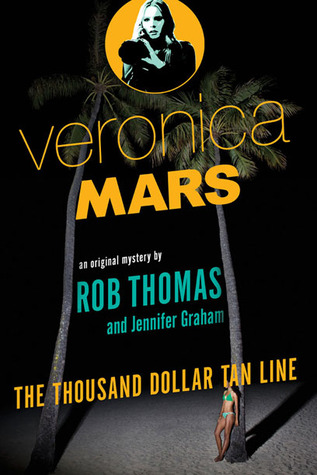The television show “Veronica Mars” ended in 2007 to the sadness of its fans, yet unlike previous canceled series, the fanbase worked to raise over five million dollars to fully fund the production and distribution of a feature film themselves. In addition to the film, released March 14, the creator Rob Thomas also developed a two-book series dedicated to the life of Mars after she stepped off the screen for the last time.
“Veronica Mars: The Thousand Dollar Tan Line” was released March 25 and takes place in the infamous and ficticious Neptune, Calif. The city is once again experiencing a myriad of conspiracies, mysterious disappearances and even deaths. Mars is back on the job as a private investigator, because during the city’s spring break tourist peak, a college woman goes missing.
As Mars attempts to figure out the woman’s last known sighting, a second woman disappears. The PI relies on her sass and intuition as she delves into the case, following leads on everything from cartel involvement to a disgruntled brother-in-law. In addition to the disappearances, Mars struggles to handle her recently injured father, Keith, who does not support her private investigator career and her newly-back-together boyfriend, Logan Echolls, who is deployed overseas.
Thomas knows the character of Mars inside and out, which lends believability and consistency to the book for fans. Though the recent movie brought back a slew of personalities the audience knows well, the book gave the Mars storyline a chance to try and wrap up all character storylines in the form of a variety of cameos. Yet with the extensive character list and years of background information, it will be very difficult for a “Veronica Mars” newcomer to even begin to understand what is going on.
Additionally, though Thomas knows and understands the character he created, the book does not demonstrate such prowess. The show and movie both had voice-overs from Mars, so the audience always knew what she was thinking. In contrast, the book is told through third person narration rather than first, so the audience is always one step behind her. Though this is typical of detective literature, maintaining continuity between mediums would probably have worked better.
Despite the fact that some logistical aspects could be improved, the story itself is very interesting. Mars thoroughly investigates every aspect of the crime, but even she cannot predict where the case will take her. Twists and turns keep the readers on their feet, and the readers are never sure who is the perpetrator or victim. “The Thousand Dollar Tan Line” does a great job of this; not only is the criminal a complete surprise, but upon further investigation, Thomas leaves a variety of artfully placed clues that a reader can pick up on after a second perusal.
All fans of “Veronica Mars” will enjoy the story, as it is the same type of intelligent crime story featured on the show.
New readers may struggle to get into the story with such vast background information needed, but the book will still remain enjoyable and exciting. The book is probably an attempt to raise awareness of the show for people who are new to the phenomenon, and it might end up boosting ticket sales for the “Mars” movie. The plot is intelligently constructed with interesting plot twists, filled with all the famous Mars quips that provide a laugh for the readers. Those looking to get involved with the “Mars” phenomenon would find better material by starting with the series instead of the book.











